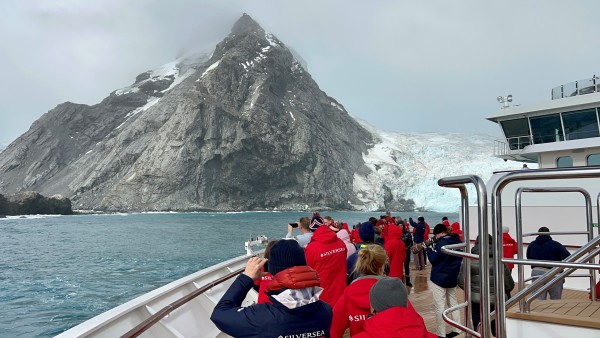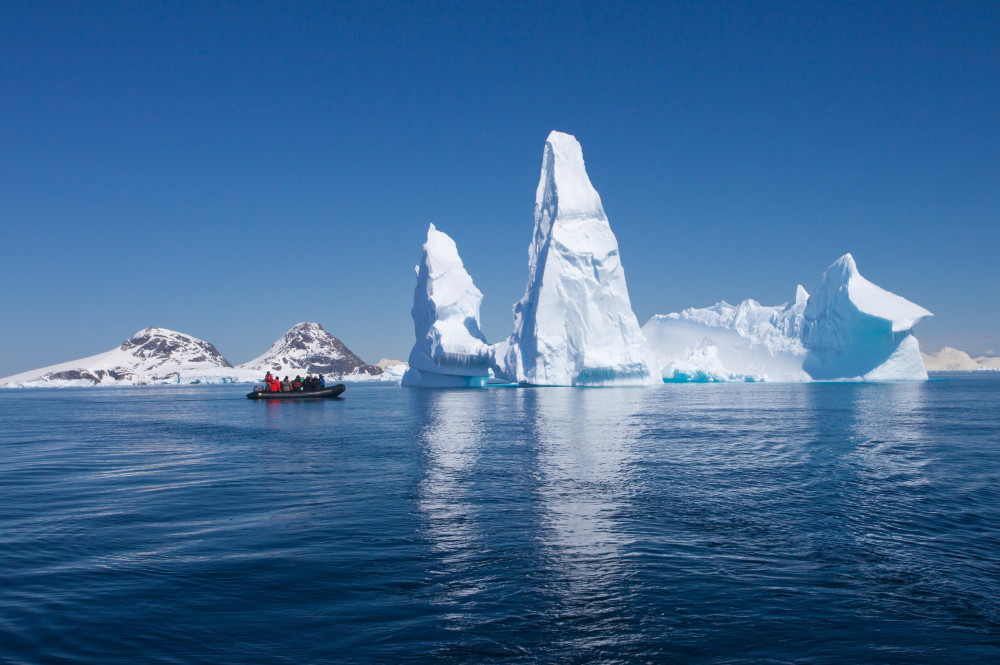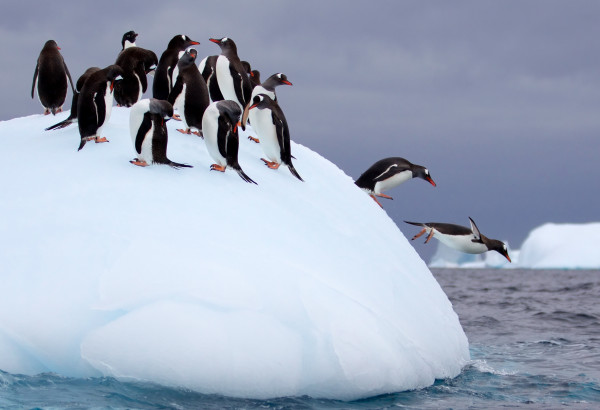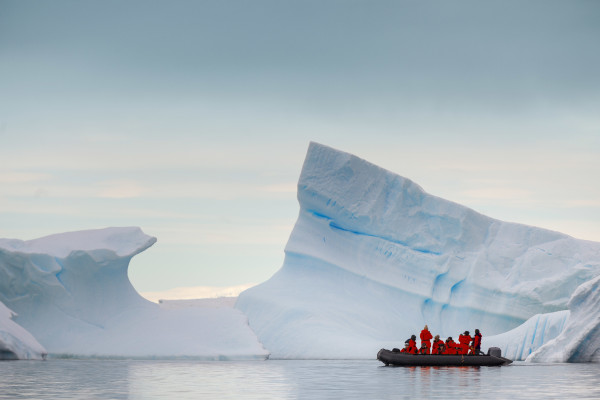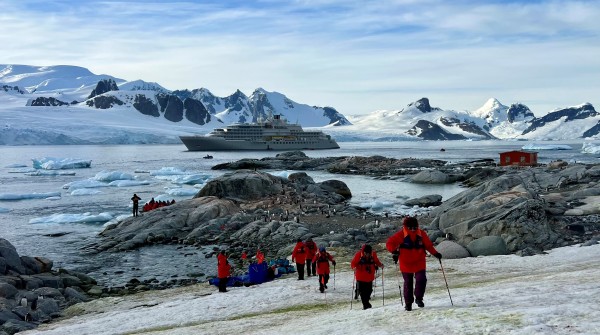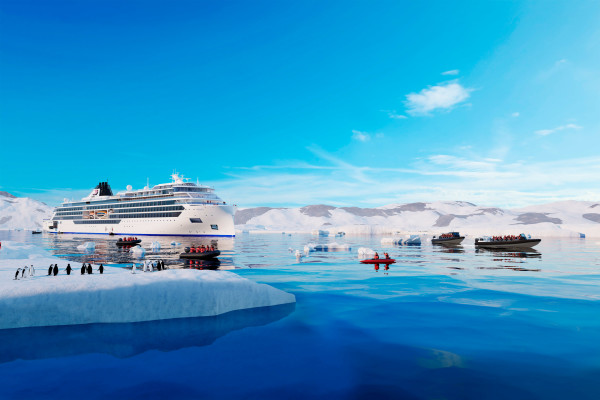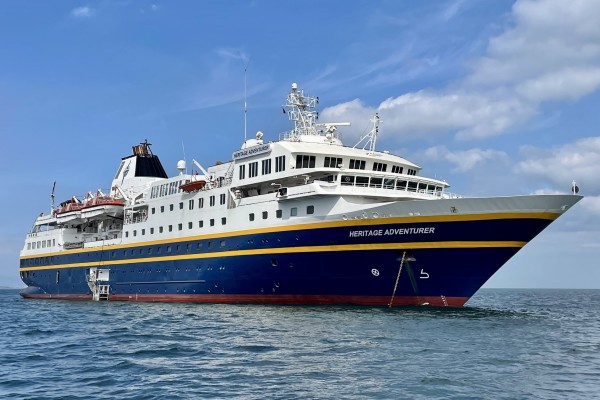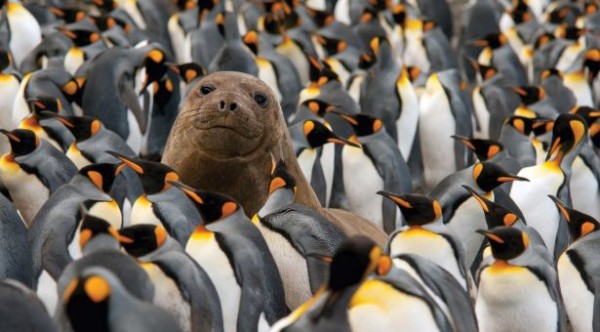Wilhelmina Bay
Wilhelmina Bay is high in the ranks of must-see Antarctic sights, and for good reason: The bay’s sheer ice cliffs and glacial sculpturing epitomize much of the Antarctic experience. Its waters are also sheltered, usually enabling Zodiac cruises between the islands and icebergs.
Wilhelmina Bay is sometimes called “Whale-Mania Bay,” as it is one of the best places in Antarctica to spot these large marine mammals. The waters of Wilhelmina Bay are filled with krill, the staple food of many whale species, and owes to the ample population of the animals there. Sadly, however, it also explains why Wilhelmina Bay was once a top whaling location.
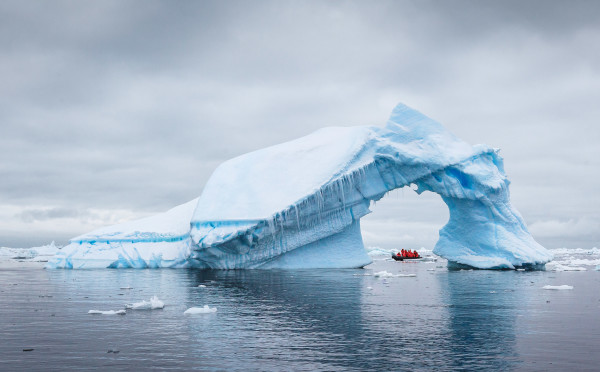
Peterman Island
For many visitors, Petermann Island is the only place they will see Adélie penguins. The island hosts one of the northernmost Adélie penguin colonies, as well as one of the southernmost Gentoo penguin colonies. Blue-eyed shags also breed on Petermann Island, and around the landing bay leopard seals and humpback whales may be seen. Vibrant green and red algae, known as cryoplankton, colors the snow in bursting clouds, especially when the snow is melting in summer.
Pleneau Bay
Pleneau Island is located west of Booth Island at the southern end of the Lemaire Channel and features an array of iceberg scenery. In fact, an astonishing ninety-three percent of the world's mass of icebergs is found surrounding the Antarctic. The word "iceberg" actually comes from partial Dutch translation meaning "ice mountain." The term iceberg refers to chunks of ice larger than 5 meters (16 feet) and smaller chunks of ice are known as bergy bites (how cute!) and growlers. While Antarctic icebergs last typically ten years and Arctic bergs about two years, what's interesting to note is the glacial ice that icebergs are made of could be more than 15,000 years old!
Paradise Bay
When it comes to Antarctic scenery, Paradise Bay is a longstanding favorite. Enormous glaciers tower out of the steel-blue sea, shattered icebergs shimmer along the shoreline, and there’s a fair chance you can spot whales, gentoo penguins, or crabeater seals as well. When the sun is shining and the weather calm, there are few places that will give you the classic Antarctic experience more than a brisk Zodiac cruise around Paradise Bay.
Paradise Bay is located just north of the Lemaire Channel and was once used by whale hunters as an anchorage for their floating factory ships in the early 20th century. The Argentinian research station, Almirante Brown, is located there and is a possible landing site.
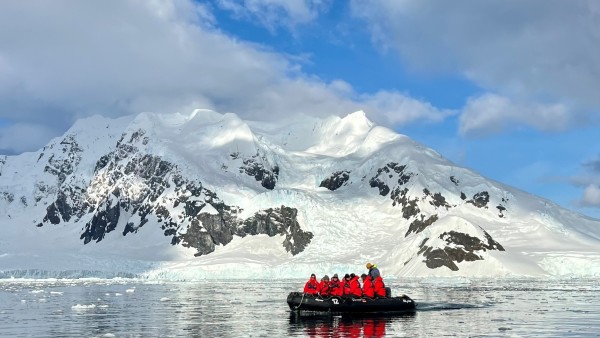
Neko Harbour
The whaling ship and floating factory, Neko, is where this scenic Antarctic bay got its name. Neko was stationed here from 1911―24 after the bay was discovered by Belgian explorer Adrien de Gerlache during his 1897―99 expedition.
Gentoo penguins breed on the hill above Neko Harbour, while Weddell seals and fur seals often haul out on the beach. If we are lucky, we may see these animals during our visits. But even if the Neko Harbour wildlife does not make an appearance, the scenery is nevertheless fantastic.
Deception Island
It is an active volcano in the South Shetland Islands, off the Antarctic Peninsula. Its unique landscape comprises barren volcanic slopes, steaming beaches and ash-layered glaciers. It has a distinctive horse-shoe shape with a large flooded caldera. This opens to the sea through a narrow channel at Neptunes Bellows, forming a natural sheltered harbour. It is one of the only places in the world where vessels can sail directly into the centre of a restless volcano.
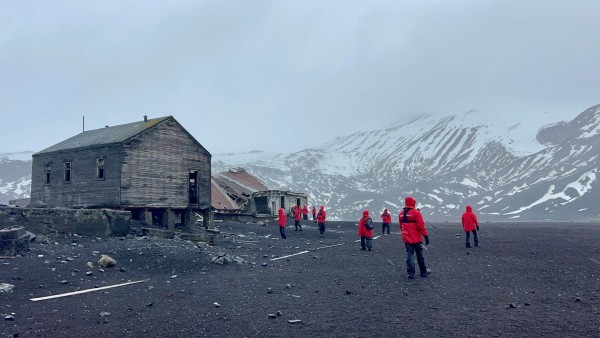
Elephant Island
Elephant Island is located 245 km (152 miles) from the Antarctic Peninsula’s northern tip and can be a good location for spotting migratory gentoo penguins and nesting chinstrap penguins.
Named after the elephant seals seen along its coast by the First Russian Antarctic Expedition of 1821, Elephant Island’s eastern shore also resembles (to some) an elephant trunk.
After Shackleton’s ship Endurance sank in 1916, he and his crew made a gruelling journey to Elephant Island. Stowaway-turned-sailor Perce Blackborow was the first to set foot on it. Shackleton and five men sailed to South Georgia for help, while the 22 others lived on Elephant Island for over four months until their return, building a hut on Point Wild.
Chilean Navy officer Luis Antonio Pardo Villalón captained the ship that rescued the men. There is a bust of him in the area that is a certified historic monument, and we are usually able to get close enough to see it from our Zodiacs or vessels.
